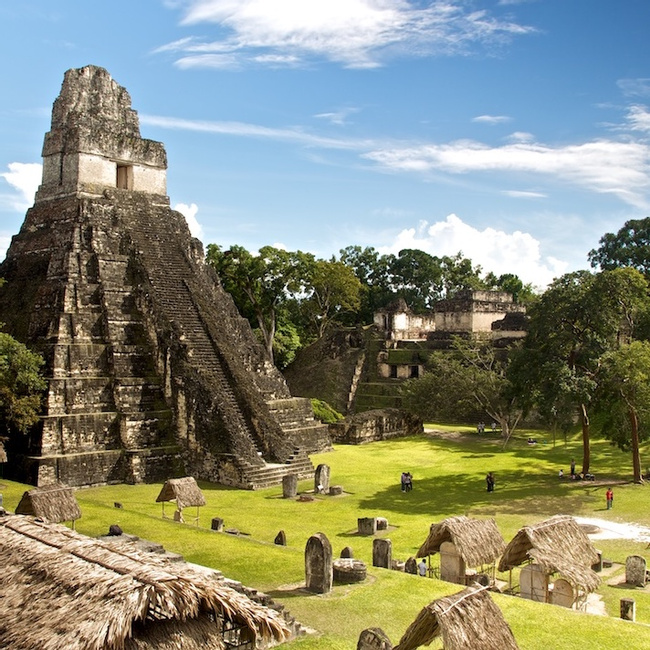- Travel Guides
The People and Culture of Guatemala
Guatemalans have a strong cultural heritage that blends indigenous Mayan, European, and Caribbean influences. Today, the ethnic diversity is visible in the various languages and lifestyles that exist throughout the country. The population is also on the rise — in fact, Guatemala is one of the fastest growing countries in all of Latin America.

As of 2013, the population of Guatemala was estimated to be a little over 14 million. The annual growth rate is just under 2 percent. Guatemala is also a fairly young country — the median age is 20.7 years, with around 37 percent of the population falling under the age of 15.
Despite the fact that Guatemala City is the largest city in Central America, Guatemala is still very much equally divided between urban and rural populations — around 49 percent of the population lives in urban environments. Urbanization is gaining the most steam near Guatemala City and Quetzaltenango.

Ethnic Diversity
Guatemala is more or less divided evenly between the descendants of indigenous Maya groups (of which there are 21 different linguistic groups) and ladinos, who are of Mayan descent but have westernized their dress and culture and also speak Spanish. There are also a large number of mestizos, who are a mixture of Mayan and European, as well as a smaller amount of people with pure European lineages.
Indigenous Mayan descendants are strongly represented in the Western Highlands, whereas the Petén lowlands, Guatemala City, Pacific Slope and Caribbean Lowlands are mostly ladino. The main Mayan groups of Guatemala are the Kaqchikel, K’iche’, Tz’utujil, Mam, Ixil, Poqomchi’, Poqomam, Q’eqchi’, and Q’anjob’al. The K’iche’, with nearly one million speakers, are the largest group. The Kaqchikel have around 400,000 speakers and the Mam have some 686,000 speakers.
The Garinagu are a non-Mayan group in Guatemala that comes from African and Amerindian descent. They arrived in Guatemala in the 1800s via St. Vincent and the island of Roatán, Honduras and settled along the Caribbean coast in the town of Lívingston. Their Garífuna culture is fairly different from that of the rest of Guatemala.
Religion
Guatemala’s religious mosaic primarily includes traditional Mayan spirituality, Catholicism, and Evangelical Christianity. There are small Muslim and Jewish populations in Guatemala City as well.
Mayan spirituality predates the arrival of the Spanish. In Mayan spiritual practices, natural phenomena – including mountains, caves, and rivers – are very important. The Mayan temples mimic mountains and are often aligned with the cardinal directions. In fact, some temples were built precisely to mark the solstices. Caves, like those at Candelaria, were sacred and seen as passages to the underworld. Modern Mayans often hold religious ceremonies in caves and at archeological ruins.
The Popol Vuh is a K’iche’ book composed of creation myths, legends, and history. In the central creation myth, mankind is fashioned from corn. The Popol Vuh somehow survived the burning of most other sacred Mayan writings during the 16th century.
Catholicism entered Guatemala with the Spanish. Local indigenous groups were slowly converted and Catholicism occupied a place as Guatemala’s main religion for many centuries. Near the late 19th century, however, liberal reformers began to rein back the control of the church by confiscating church property and secularizing education. During the civil war, many Catholic priests opposed the military and paid for it with their lives. Catholicism still has a solid number of followers in Guatemala, although large numbers of people have converted to Evangelical Christianity.
As much as a third of Guatemalans are Protestants and Evangelical Christians. The move towards Evangelical Christianity happened after the 1975 earthquake, which destroyed several highland villages. International aid agencies, many of them Christian, were of great help in the aftermath and as a result gained converts. These days, many villages, particularly in the highlands, are largely Evangelical.
Many of the country's holidays and festivals are related to religion. Booking your trip during an event is a wonderful way to truly absorb the cultural practices of Guatemala — and enjoy some of the country's delicious food and beverages.

Language
Guatemala’s official language is Spanish, but there are 23 other ethnolinguistic groups found here. Guatemalan Spanish is clean and fairly easy to learn and understand. The huge number of Spanish-language schools in Guatemala, many of which are located in Quetzaltenango and Antigua, reflect this fact. In some Spanish schools it’s possible to learn Mayan languages as well.
We believe travel is more than ticking destinations off a list – it’s about discovering new places deeply, feeling connected wherever you go, and knowing you have a trusted team behind you every step of the way.



